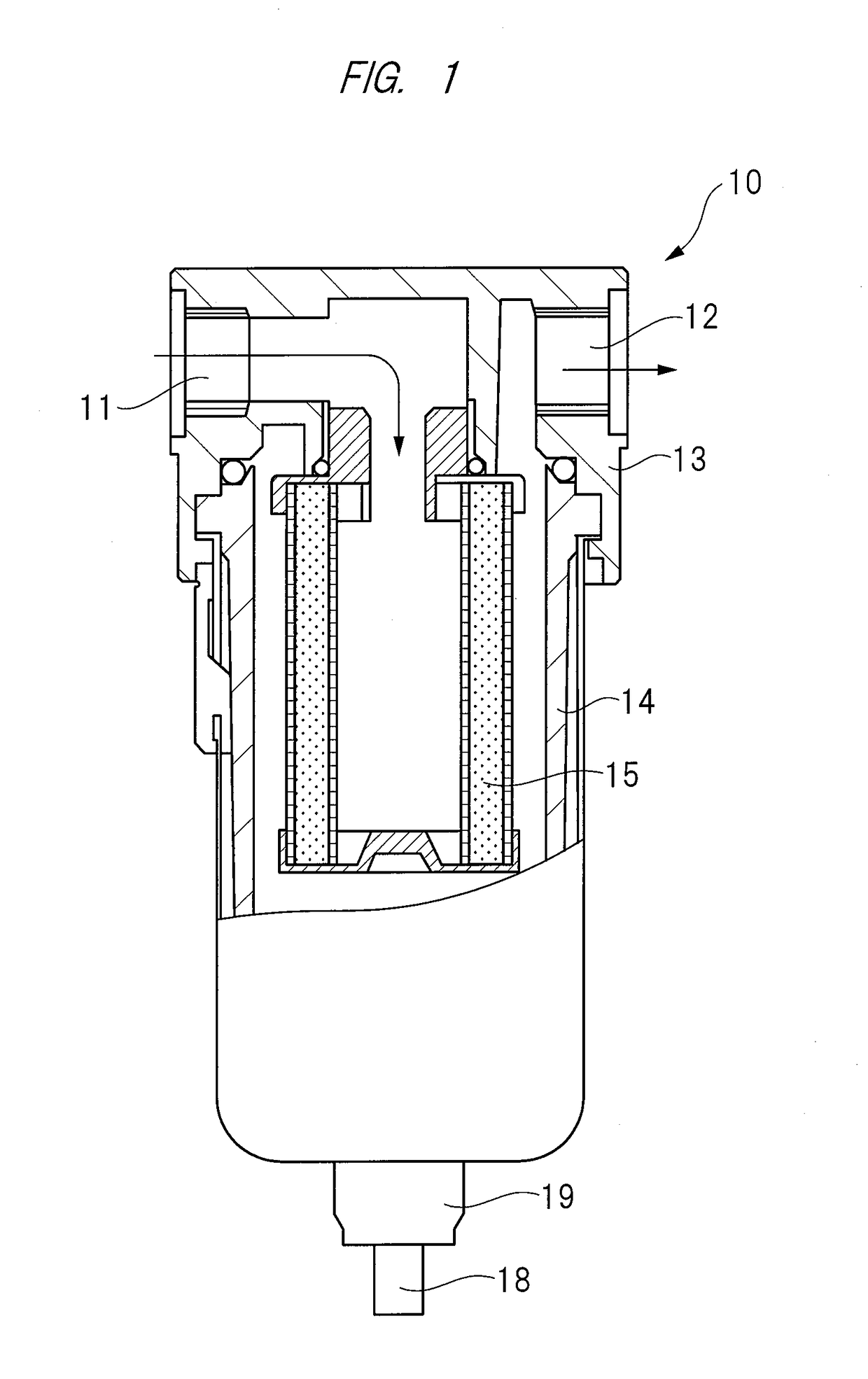Automatic drain
a technology of automatic draining and drain valve, which is applied in the direction of steam traps, mechanical equipment, etc., can solve the problems of increasing the length of time required for discharging liquid, forming such holes, orifices, etc., and reducing the size of the automatic drain. , the time required for the compressed air in the piston chamber to flow, and the effect of sufficient length
- Summary
- Abstract
- Description
- Claims
- Application Information
AI Technical Summary
Benefits of technology
Problems solved by technology
Method used
Image
Examples
Embodiment Construction
[0028]Hereinafter, embodiments of the present invention will be described in detail with reference to the drawings. As shown in FIG. 1, an automatic drain 10 includes a port block 13 having an inflow port 11 and an outflow port 12 for taking in and discharging compressed air. A collection container 14 is referred also as “bowl” and attached to the port block 13. The port block 13 forms part of the collection container 14, and the inflow port 11 and the outflow port 12 are provided to the upper part of the port block 13. A space disposed below the port block 13, that is, formed in the collection container 14 serves as a separation space. A cylindrical filter element assembly 15 is disposed in the collection container 14, and attached to the port block 13. This automatic drain 10 is incorporated in an air pressure line for supplying compressed air from an air pressure source to pneumatic equipment, a primary pipeline extending from the air pressure source is connected to the inflow po...
PUM
 Login to View More
Login to View More Abstract
Description
Claims
Application Information
 Login to View More
Login to View More - R&D
- Intellectual Property
- Life Sciences
- Materials
- Tech Scout
- Unparalleled Data Quality
- Higher Quality Content
- 60% Fewer Hallucinations
Browse by: Latest US Patents, China's latest patents, Technical Efficacy Thesaurus, Application Domain, Technology Topic, Popular Technical Reports.
© 2025 PatSnap. All rights reserved.Legal|Privacy policy|Modern Slavery Act Transparency Statement|Sitemap|About US| Contact US: help@patsnap.com



